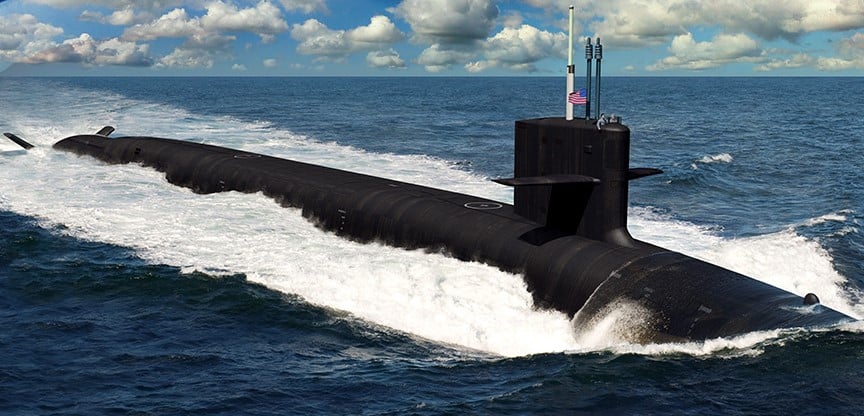Navy Stands Up Columbia Submarine Office, Key to Nuclear Triad
Posted on

A Navy depiction of the future USS Columbia nuclear missile submarine (SSBN 826)
PENTAGON: The Navy’s top acquisition official said Wednesday he is standing up a new office to oversee the strategic aspects of the Columbia-class submarine, the service’s largest acquisition program and a critical piece of the nation’s nuclear triad through the 2080s.
James Geurts, assistant secretary of the Navy for research, development and acquisition, told reporters at the Pentagon the new Program Executive Office-Columbia will ensure a singular focus on the program, while keeping distractions from other submarine modernization programs at bay.
The first of the 12 Columbia submarines is scheduled to begin construction in 2021 and enter service in 2031, and once completed will carry a staggering 70 percent of the country’s nuclear arsenal within their hulls.
That kind of firepower makes the Columbia the key to the nation’s nuclear triad, and absolutely critical to the Pentagon’s overall nuclear and national security strategy for decades to come.
“As we look at how important submarines are to the National Defense Strategy,” Geurts said, in addition to the ongoing modernization of Virginia-class subs and the SSN(X) program slated to kick off in the early 2030s, “my concern was with Columbia being the number one acquisition program, do we have enough leadership bandwidth available to oversee and run all those programs simultaneously?”
The new PEO office, to be run by Rear Adm. Scott Pappano, will not replace the current program manager shop overseeing the design and build of the Columbia. Instead, Pappano will be responsible for working with the UK on commonality between the Columbia and the nascent Dreadnought submarine program, while focusing on the “strategic systems portfolio, planning for tests, building facilities, all the things besides managing the day to day design and construction,” of the subs, Geurts said.
Though the first hull won’t begin taking shape until 2021, Geurts explained that he wanted to get ahead of the game. “I did not want to wait for crisis, I wanted to ensure we were proactively working the program.”
Wrapping up the design and build on a set schedule with strict budget lines means the Columbia-class has “a lot of challenges ahead,” he added, but with a full PEO shop managing them, any bumps or hiccups should be easier to manage according to his thinking.
One incident that reverberated throughout the Pentagon occurred last year after a subcontractor for boat builder, General Dynamics’ Electric Boat made errors in welding missile tubes, leading to tens of millions of dollars in fixes that were absorbed by the contractors.
Navy officials have said that the issues have been resolved, but wariness remains.
Last week, Strategic Command chief Gen. John Hyten told a Senate panel he was “very concerned” about how much time the welding fixes might take.
“I’ve gone with Adm. Caldwell, head of navy nuclear reactors, up to the shipyard at Electric Boat and done a deep dive,” Hyten told the Senate Armed Services Committee. “I have to be honest…I was very concerned because there was so little margin in the overall schedule, [and if] you’re eating margin and not putting margin in, that causes me concern.”
Speaking last week at the Heritage Foundation, Rear Adm. John Tammen, who directs the Navy’s Undersea Warfare Division, agreed the Columbia program has very little wiggle room. But he said he’s working with Electric Boat to pull some work into the “gap years” built into the program’s schedule, and the missile tube fixes will not consume the “many months of margin left in that program.”
Subscribe to our newsletter
Promotions, new products and sales. Directly to your inbox.
